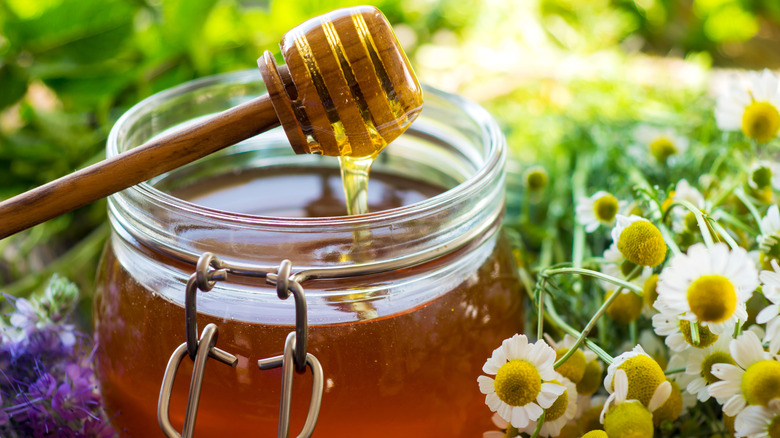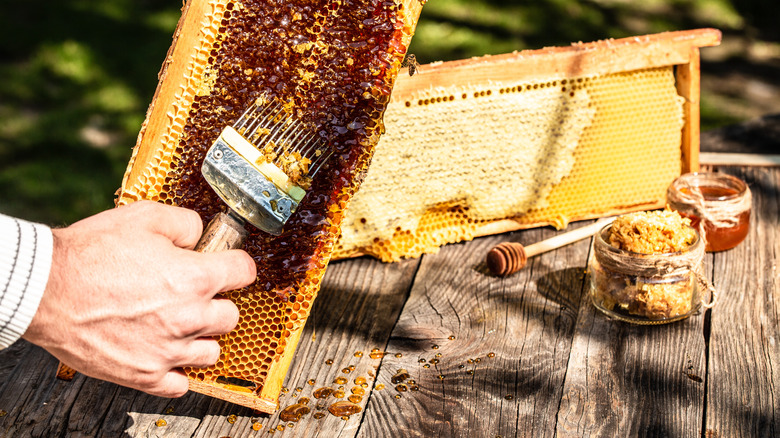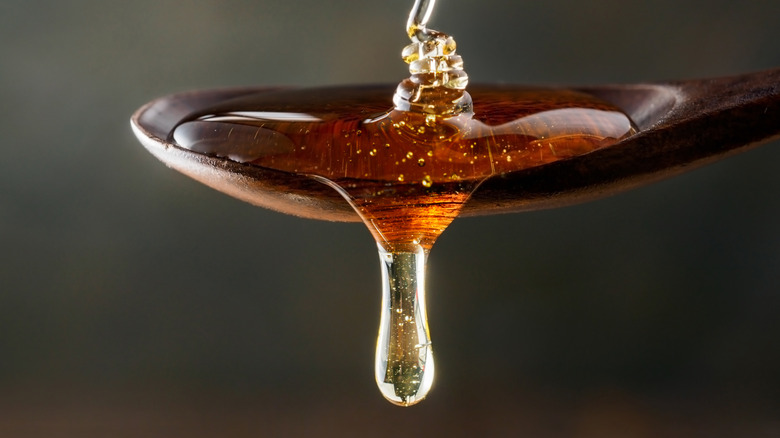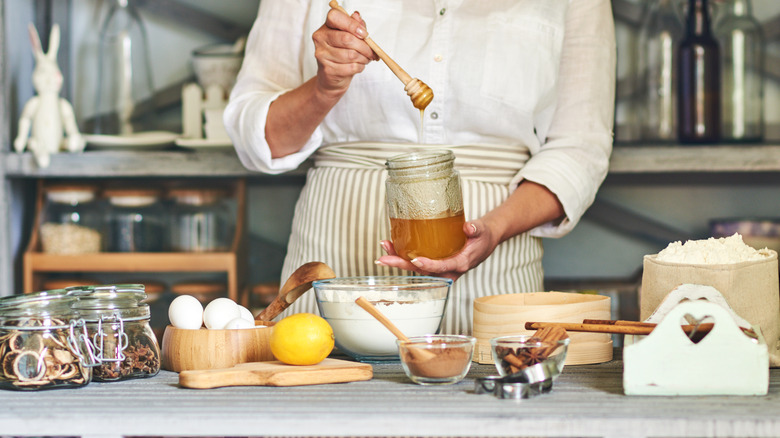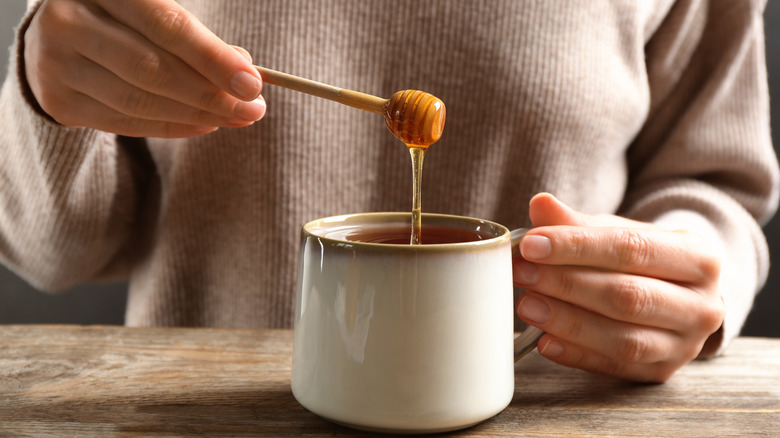What Is Raw Honey And Is It Safe To Eat?
We may receive a commission on purchases made from links.
Honey. All you really need to know is it comes in that cute little plastic bear, right? Well, not so much. According to the National Honey Board, in the United States alone, you'll find more 300 different varieties of honey, each one influenced by the specific nectar, time of harvest, region, how it's cultivated and, of course, how it's prepared for market.
There is, however, one basic dividing line: raw honey versus processed honey. The National Honey Board says there's no official federal definition for raw honey, but the general rule is raw honey has not been heated or filtered. The National Honey Board takes that description a step further, defining raw honey as "honey as it exists in the beehive or as obtained by extraction, settling or straining without adding heat." Still, for better or worse, purists who swear by raw honey are enthusiastic about its perceived benefits, including trace amounts of pollen packed with protein, carbs, fats, vitamins, minerals, enzymes, and antioxidants (via Healthline).
How is raw honey made?
Raw honey is honey that exists in its purest form, straight from the beehive, according to Healthline. Beekeepers extract the honey from honeycombs and strain it through a fine cloth to remove impurities like beeswax and bee parts. Then it's poured into a bottle and ready to serve. That's it. There are no added preservatives or colors.
Nature Nate's goes into a bit more detail, explaining what's not done, including pasteurization. According to MasterClass, pasteurization involves applying mild heat to raw foods to destroy any inherent, and potentially dangerous, bacteria and pathogens. The process also helps extend the shelf life of foods. Louis Pasteur, a French chemist, invented the process in 1864 while experimenting with wine. Nature's Nate also points out the difference between straining raw honey and filtering processed honey. In general, straining is a gentler process utilized to remove unwanted debris while maintaining all the good bits, like pollen.
What does raw honey taste like?
If you're happy with the product that comes in plastic bears, you'll be overjoyed with high-quality raw honey. According to Serious Eats, the "Grade A" honey you'll find near the Jiffy Peanut Butter and Smucker's Jam in your local grocery store is like one flat note of sweetness, while raw honey is a symphony of flavor.
And while run-of-the-mill processed honey is usually a blend of honey sourced from different places, raw honey maintains its local influence. Beekeepers operate by regions (via Beesource), so the terrain, flora, and climate impact best practices and beekeeping techniques. Consider the Northeast, where long winters and a short growing season limit the kinds of nectar, so bees forage alfalfa, white clover, and wildflowers. In the North-Central region, the honey takes on the flavor of locally grown soybeans, sweet clovers, basswood, and raspberry. Honey cultivated in the Southwest will reveal hints of alfalfa, cotton, mesquite, citrus, safflower, and wild buckwheat. Changing seasons also influences the taste, texture, and color of raw honey. According to Serious Eats, autumn honey is usually sweeter than spring honey.
How to cook with raw honey
Cooking with raw honey can be as simple as drizzling it over a bowl of ice cream and as complex as incorporating it into the preparation of a main course. My Recipes points to the burgeoning market for artisanal honey products as a source of inspiration, and advises not to be put off by its sometimes cloudy appearance — remember, it's strained, not filtered.
Start small to get a feel for the flavor and texture of raw honey. Try it as a sweetener in place of sugar or agave. Incorporate it into breakfast by dolloping it on a muffin or blending it into a smoothie. It's also good in salad dressings like a honey mustard blend (via The Herbeevore). Chef Alex Figura told Serious Eats he likes to make honeycomb candy, while Chef Jonathan Zaragoza shared his trick for replacing sugar with honey in traditional green mole to get a smoother consistency. A little imagination goes a long way.
Is raw honey good for you?
That's a loaded question. Let's start by saying it's not bad for you. Raw honey has been hailed as an elixir of sorts, celebrated for treating everything from skin rashes to diarrhea. The German Federal Ministry of Health recognizes bee pollen (a substance more prevalent in raw honey than in processed honey) as a medicine, according to a Healthline, which also cited studies showing a connection between consuming raw honey and reduced risk for heart disease, high blood pressure, and high cholesterol, in addition to soothing coughs and accelerating healing. Medical News Today gives a nod to the antioxidants (phytochemicals, flavonoids, and ascorbic acid) found in raw honey — naturally occurring compounds that help the body battle oxidative stress that can be a precursor to chronic health conditions.
The National Honey Board suggests we take all of these health-related claims with a grain of salt. In 2012, the board conducted a study analyzing the nutritional differences between raw honey and processed honey. The results showed that while processing does reduce pollen content, it did not have a significant impact on nutrition or the presence of antioxidants.
